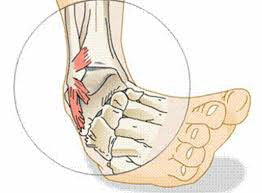PLEASE CUT AND PASTE THIS LINK TO SEE THE FULL VIDEO
https://www.youtube.com/watch?v=DLhjX1GxLCk
Ankle sprains are a common injury and the potential for recurrent sprains is a likely consequence of structural trauma of ankle ligaments and decreased Proprioceptive Feedback and peroneal weakness (Lofvenberg et al 1995).
Proprioceptive Feedback refers to the body's ability to sense movement within joints and joint position. This ability enables us to know where our limbs are in space without having to look.
When these two factors – peroneal weakness and decreased proprioceptive feedback - are combined, the potential for chronic ankle instability and further weakening of the peroneal muscles is very likely.
Without effective innervation the ability to stabilize when required is greatly reduced and we are subsequently unable to respond to the stimulus. Therefore the peroneals’ firing patterns are inadequate and this effects our ability to correct balance and absorb the impact of foot striking.
The stretches we suggest here are intended to keep these muscles lengthened and flexible so they are effectively react to stress in their environment. Is your ankle is able quickly move into a eversion to stabilize itself from rolling over?
Commonly, the outer edge of your foot will be drawn inward and you will “roll your ankle” causing you to fall off to the side. Developing responsiveness to counteract this will rest, in part, with your tissues ability to stretch, recoil and contract.
Source
Lofvenberg R, Karrholm J, Sundelin G, Ahlgren O. Prolonged reaction time in patients with chronic lateral instability of the ankle. American Journal of Sports Medicine, 1995: 23(4):414-417.

